Emergency Funds: All of your FAQ’s (but were too shy to ask)
We’re diving into all the details of your most important bank account, your emergency fund!

Author: Kari Lorz – Certified Financial Education Instructor
Everyone keeps talking about emergency funds and how you HAVE TO have one. As you’re talking with your friends, it seems that they already have it together, they sound so confident. You sink a bit lower in your seat because you don’t have anything like this. (Dang it! I hope they don’t notice that I’m not talking about mine! )
You know you should, and it’s been on your to-do list, but you just haven’t gotten there yet. Of course, you know that it’s good to have extra money, but why is an emergency fund better than other accounts? In fact, what makes it different? AND, how do you even get an emergency fund started, and where is it held, is it separate?
Today we’re going to dig into all your FAQ’s about emergency funds, and by the end of this post, you’ll know everything you need to start your own emergency savings! In fact, you can even get started on it today!
Emergency funds are the holy grail of money-saving accounts. Everyone wants one, but not a lot of people have one (or if they do, it’s not as large as they’d like). So what gives? Well, there’s a lot of info out there, some of it conflicting. Let’s break it all down to the basics, make it simple & straightforward! Sound good?
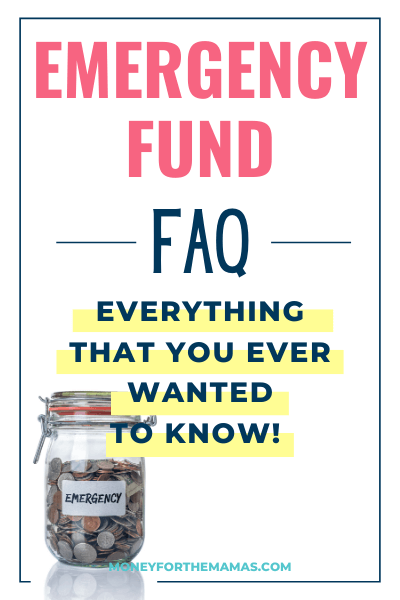
This post may contain affiliate links. If you make a purchase, I may make a commission at no cost to you. Please read my full disclosure for more info
What is an emergency fund?
It’s an emergency savings fund, so a bank account with money set aside specifically to cover an unexpected expense, usually large expenses. Things like a medical emergency or your water heater broke, or you lost your job, and you need money to pay your regular bills and buy groceries.
People also call it their rainy day fund, their safety net, or their emergency savings.
This isn’t an account for expenses that you know will happen, like new tires for your car or you have to pay your medical premiums for the year. You know those things will happen, so you should already be planning for it in your monthly budget or start a sinking fund for them.
There are lots of things you should start saving up for, but your emergency savings is your #1 priority!
And who needs an emergency savings account? Everyone, no matter their financial situation, needs a safety net!
How is an emergency fund different than other savings accounts?
An emergency fund is an account that you typically don’t use, and like the name implies, it’s for emergency expenses only. So unless you’ve broken a mirror in the past seven years, you won’t have that many emergencies, so this account should largely remain untouched.
A savings account is usually for something that you are specifically saving for, like you’re saving for a down payment on a new house, or you’re saving for a new car or a new kitchen table. This is saving for things that you know will happen. You have an item you want to buy and a specific savings goal.
An emergency fund is also completely separate from any retirement savings that you have.
Why do I need an emergency fund?
Life is full of surprises, and we should expect that the unexpected will happen. Like medical bills from a broken leg, or if you’re getting divorced and need an apartment right now, or if a loved one passes away and you need extra money to buy a plane ticket to go to their funeral.
These are big things that can have a tremendous financial impact on you, and you need an emergency fund so that you still have money to pay for your groceries and other regular monthly expenses.
The last thing you want to do is put everything that you need on a credit card and then start racking up interest. That’s probably one of the worst things that you can do, but many do it because it is an obvious and easy answer to life’s emergencies. It’s so easy that the average American spends $1,141 on interest a year!
How much do I need in an emergency fund?
It’s generally known that all experts say you need to have an emergency fund, yet how much you need to have in there is where they differ. Some experts say you need 3 to 6 months of living expenses, some experts say 6 to 9 months of expenses, and some experts say a year.
It’s going to be different for every family, all depending on your circumstances. For example, if you are a bank teller in a large metropolitan city, most likely, there will be many banks hiring at any given time, so the likelihood of you finding a new job is pretty good. So you could probably be alright with a 3-6 months of expenses for your financial goal.
Yet, if you are a contract worker that deals with an obscure piece of machinery that not a lot of companies utilize, then the likelihood of you getting the job quickly isn’t as good. You may need a year’s worth of emergency funding in your account to get by until you find a new job.
So take into consideration your job market, what type of expenses you have right now, and what your future expenses will look like (i.e., will you need a new car in a year or so, or a new roof on your house? Think ahead!)
From there decide on your comfort level, some people like a lot of cushion in their funds, just in case, while other people are more free-spirited and don’t think they need that much emergency money.
If having too small of emergency savings and it will keep you up at night, then by all means, make it larger! Peace of mind is priceless! Going the other direction, and having a smaller fund isn’t advised. At the very least, I wouldn’t go smaller than three months of expenses.
My recommendation for how much you should have in your emergency fund is 6 to 9 months of living expenses.
What expenses should you include to figure out how much you need
When I say living expenses, that includes things you have to pay/buy …
- Rent/mortgage
- Electricity
- Water/sewer
- Garbage
- Gas
- Insurance
- Basic food
You get the idea, those things that are necessary to live your life. Go through your past few months’ budgets. Average those essential items out, and then multiply it by the number of months you want it to cover, and that’s your number. For example…
- Mortgage $1,500
- Electricity $85
- Water/sewer $105
- Gas $55
- Insurance $300
- Basic Food $400
- Gas for car $120 = $2,565 for the month
$2,565 x 3 months = $7,695 minimum emergency fund
$2,565 x 6 months = $15,390 full emergency fund
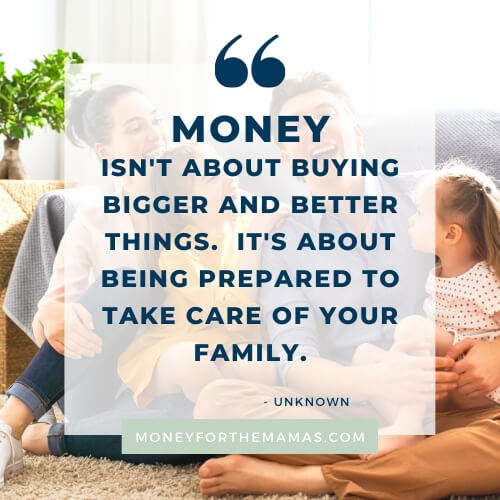
Can you have too much money in an emergency fund?
As odd as it sounds, the answer is yes. You can have too much money in your emergency fund. Now, this doesn’t happen often, but it can happen. There could be too much in your emergency account because if an emergency happened, you wouldn’t need that much. So the money is just sitting there, not earning as much as it could be. You’re losing out.
For example, with Ally as of right now (January 2024) you’d be earning 4.35% with funds in an online savings account with them. Much more than your average bank’s savings rate, but it’s a lot less than if you invested the money in the stock market.
Nerdwallet, states that “Over nearly the last century, the stock market’s average annual return is about 10%.” So would you rather earn 1% interest or 10% over the long haul? (Please keep in mind that this is the average, year-to-year it can fluctuate greatly).
Just keep just as much as you may need in there, and invest the rest so it can earn money for you!
How do I start an emergency fund?
Starting an emergency fund is pretty simple. You just start saving money. Small amounts add up over time, so don’t feel bad if you can’t stick $500 in there immediately.
You should be planning this “expense” into your monthly budget using a pay yourself first model. When looking at your budget form, you should see “savings” listed at the top, as it’s the first thing you do with your paycheck!
This method is the best way (by far) on making sure that you save money each and every month! I’ve budgeted this way for years, and we always save money towards our money goals! If you want to learn more, read The Ticket to Saving Money Each and Every Month Without Fail!
Another method that people commonly used to fill their emergency fund is with is when they get large chunks of cash like a tax return, or if they sold a car. You can sell lots of little things and slowly fill up your fund too. Like if you were an online seller on eBay or if you had a couple of garage sales.
Another thing you can do is to use an online savings app to rack up money to fill your emergency fund. A fun one that people use is Oportun. Thisis an app that you link to your bank account, and it will automatically transfer a small portion of funds from your account to the savings account. It uses algorithms to decide on how much to pull from your bank account, and it’s usually very small to ensure that you never overdraft.
You can also set limits on Oportun if you don’t want it to transfer more than a specific amount in one day. For example, one day, it transferred $0.73 from my bank account into the Oportun account, and then another day, it transferred $2.15, then another day, it was $7.35. I went back in and lowered the max amount to be $3 a day. Easy Peasy.
One of the great things about the app is that it will send you the daily balance of your bank account, and it will let you know if it transferred anything over to it. It actually feels really good getting those texts and seeing my Oportune savings account grow.
It’s is free for 30 days, so you can try it out, and then it’s $5 a month after that, but you can cancel it anytime.
Where do I put my rainy day fund?
It makes sense to put your emergency fund in a bank, and that’s precisely what you want to do. However, don’t make the common mistake of putting it in a regular savings account.
One of the smartest things you can do is to separate this money and put it into a high yield savings account. Ally Bank is a common one that people are familiar with (no maintenance fees and no minimum balance requirements). You can Google “high-yield savings account”, as this info is always being researched and compared.
The main reason you don’t want to put this in your regular bank is that typical bank savings accounts don’t earn any interest. For example, the national average of savings accounts earns 0.06% APY, that’s not a lot.
Let’s say you have decided that you want a $15,000 emergency account. With Wells Fargo, you would earn $9 a year. Yet if you were at Ally Bank, you would be earning $75 a year in interest. Then each month after that, you would earn interest on your interest that’s where the magic happens!
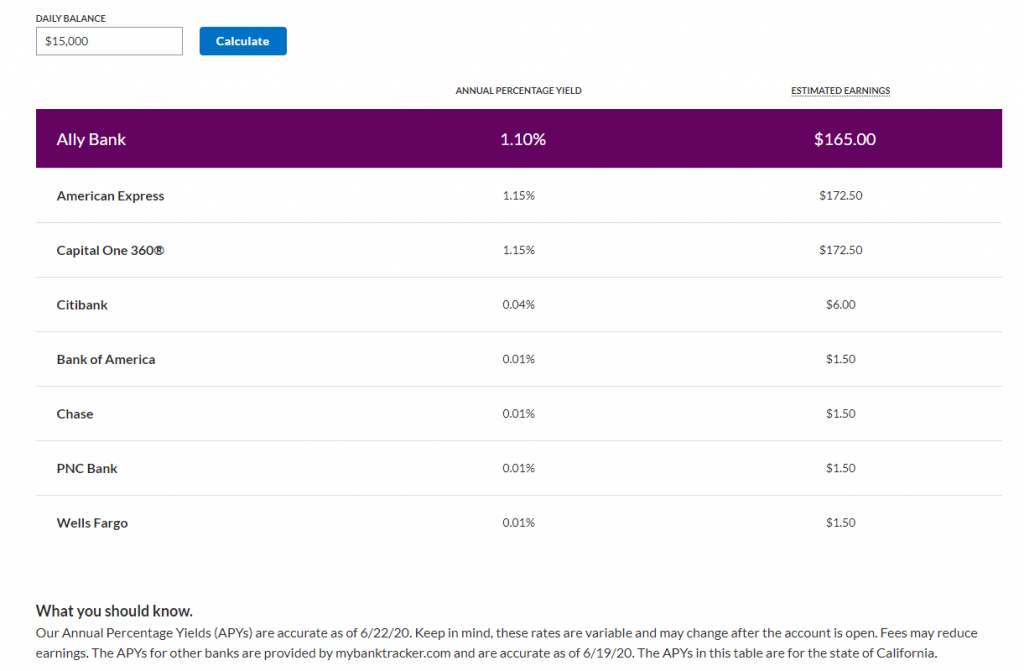
The APY on savings accounts changes all the time. When I first started with Ally, maybe three years ago, it was 1.8%. It all depends on what’s going on with our economy.
So right now, almost all banks have raised their interest. 4.00% is considered to be pretty good right now.
Earning interest is great, so you might be thinking I should invest in a 5-year CD and receive a guaranteed interest rate that’s higher. This makes sense from one standpoint. The other main aspect is that your emergency account must be liquid, which means that it’s ready cash at hand, funds that you can get your hands on any day of the week (without waiting).
So put your money in a savings account where you earn a good amount of interest, yet you are easily able to get to when you need it.
What should I use my emergency fund for?
Like we mentioned above, an emergency fund should is for a financial emergency only! Buying new tires isn’t a true emergency, they’re a known expense that you can easily handle with a sinking fund. (It’s a savings account where you save for known expenses or luxury. Check out here for a simple and easy sinking fund tracker to help get you started.
Emergency funds are for a large unexpected financial hardship. Think of things that you would use insurance for, but the insurance payment may not cover everything. For example, if you got in an accident and needed a replacement car. Or if a tree fell on your house and caved in part of your roof, or broke some windows, those all count as unplanned expenses.
The other most common thing that people use their rainy day fund is when they lose their job, and in that case, you would use your emergency fund to pay your bills and buy food nothing more.
I hear people talk about having a $1,000 emergency fund what’s the deal with this?
What you’re hearing about is most likely the $1,000 starter emergency fund that’s been popularized by money guru Dave Ramsey. This is the first step in his baby step program to financial freedom. The $1,000 isn’t a recommendation on your emergency fund; it’s just a good starting point for everyone.
- Baby Step 1 – get $1,000 emergency fund
- Baby Step 2 – get rid of all your debt
- Baby Step 3 – fully fund your emergency savings account with 3 to 6 months of living expenses
Why does Dave Ramsey I want you to get rid of credit card debt before fully funding your emergency fund?
Because when you have debt, then you are accruing interest on that debt. For 2019, Money estimated that Americans would spend $122 billion on credit card interest. Yup, BILLION! Yikes!
Having credit card debt is also a significant weight on your shoulders; it’s dragging you down mentally and emotionally. Dumping the debt frees up a lot of money for you to start earning money on! And you’ll be happier too!
- Sign up with ibotta and get $10 sign up cash as a new customer!
- Earn points on ANY receipt from ANY store and redeem for gift cards with the fetch rewards app.
- Sign up with Inbox Dollars and get paid to read emails, watch videos, and take surveys. Easy peasy!
- Get free gift cards & cash for the everyday things you do online at Swagbucks. Use the link and get a $5 bonus
- Save money on gas by signing up with Upside; it gives you up to $.25 cents cash back per gallon! Use the code AFF25 when you sign up; you’ll get a $.25 cents per gallon bonus!
- Sign up with Cash App and get a $5 bonus when you use code “NRTZMHV.” You have to complete the sign up requirements to get the bonus! Read how to do this here with point #1.
What are some quick ways to fill an emergency fund?
- Hold a garage sale
- If you are a two-car family consider selling one of them (you can always go back and get another car in a few years after you dump your debt and fill your emergency fund)
- Get a small part-time job
- Sell items on eBay ( either crafting or flipping)
- Use your tax refund
- Automatically set aside money with an app
- Do a money saving challenge , like a no spend a challenge month
What are the steps to setting up an emergency fund?
- Figure out the total cost of your “must spend” living expenses. (See the list above for what to include as a “must spend”) for one month.
- Decide how big of an emergency fund you want. Based on comfort level and job prospects
- 3-6 months
- 6-9 months
- 1 year
- Multiply your monthly living expense by the time frame you decided on in #2
- Open up a separate savings account (preferably an online high yield account) at a bank, so that you can keep this money completely separate from the rest of your money.
- Decide how much a month you can contribute from your monthly budget to fill this account. (Use the pay yourself first method for best results)
- Automate that monthly deposit to be a few days after your payday. Then you won’t have to do anything, and won’t see that money sitting in your regular account.
- Watch the money pile up and don’t touch it unless it’s a 100% emergency.
What’s the most important thing to do when setting up an emergency fund?
Glad you asked! The most important thing is to automate the savings right after you get paid (pay yourself first)! Set it up once and then forget about it! Bonus points for setting up the account at a completely separate bank!
At the end of the day
Setting up an emergency fund isn’t the sexiest or most fun of things on your to-do list. Many people postpone this, as it can be overwhelming trying to navigate the in’s & out’s of it, and it’s important, so people don’t want to screw it up. I get it.
But once you do set it up and have that safeguard for your family, you will feel a wave of relief pour over you. The weight of “what if ____ happens” won’t hold so much power over you. The fear will dissipate, and you will know that you’ve done everything in your power to keep your family secure. As Moms, that’s all that we really want, right? For our kids to be happy & safe!
Articles related to Emergency Fund FAQ’s:
- Why Sinking Funds Are Your Ticket Buying Anything You Really Want!
- Paying Yourself First is the key to ALWAYS saving money, without fail!
- 17 Money Saving Challenges to Supercharge Your Bank Account
- Printable Sinking Fund Worksheet
- Printable Pay Yourself First Monthly Budget Form

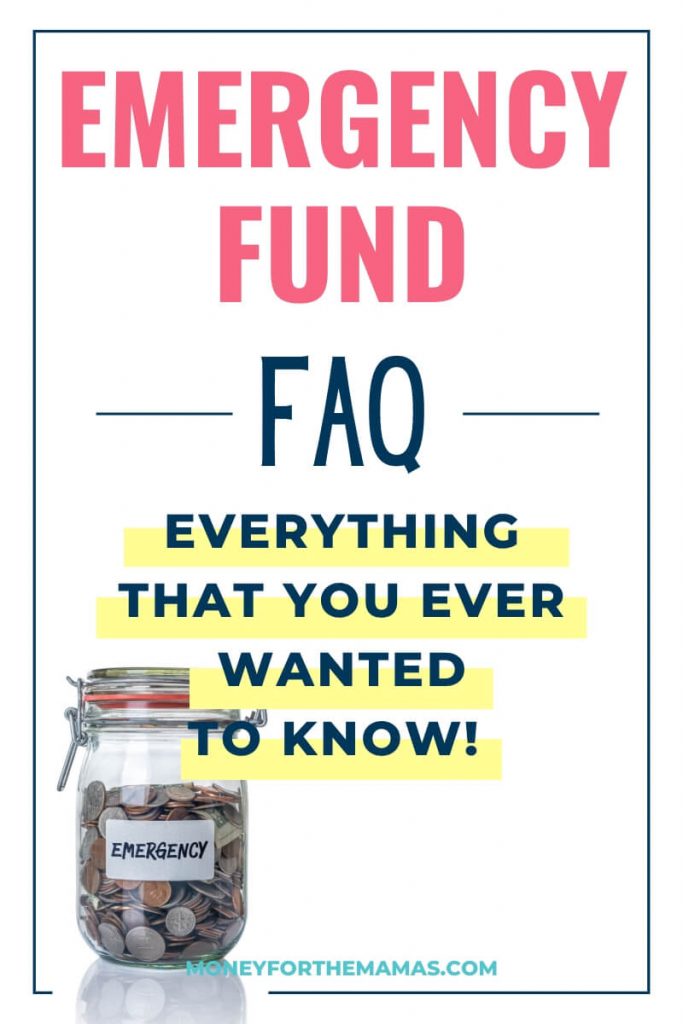
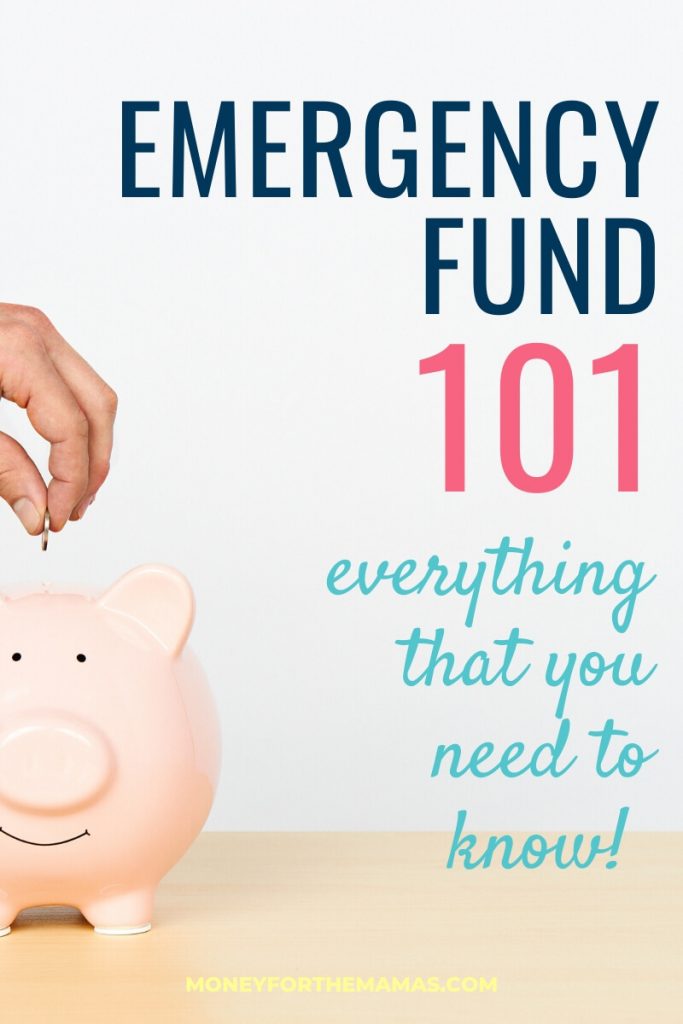
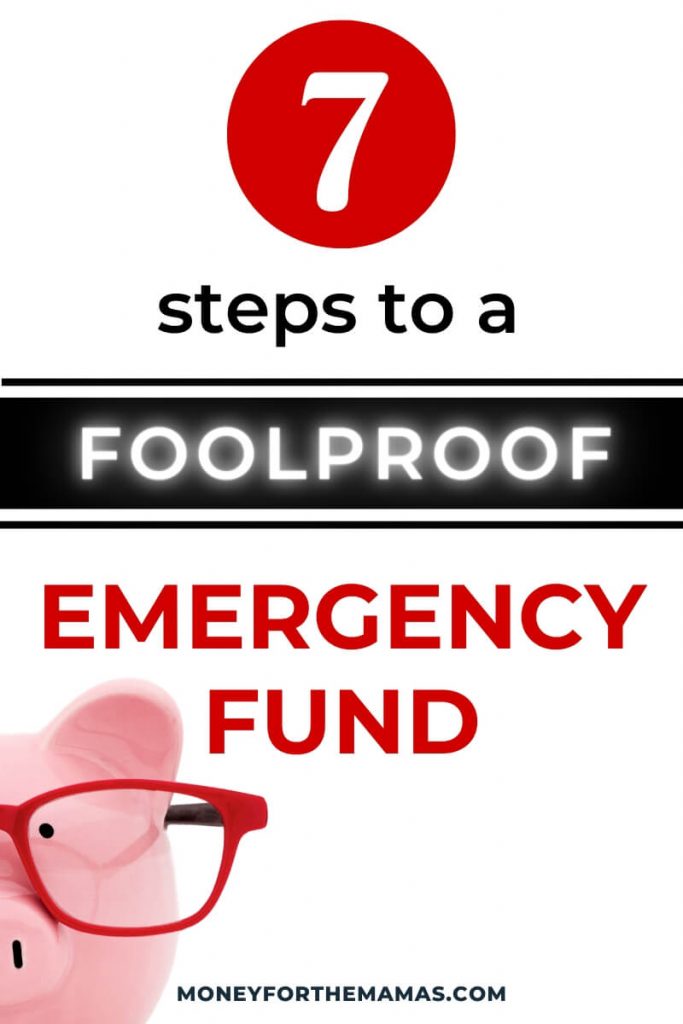
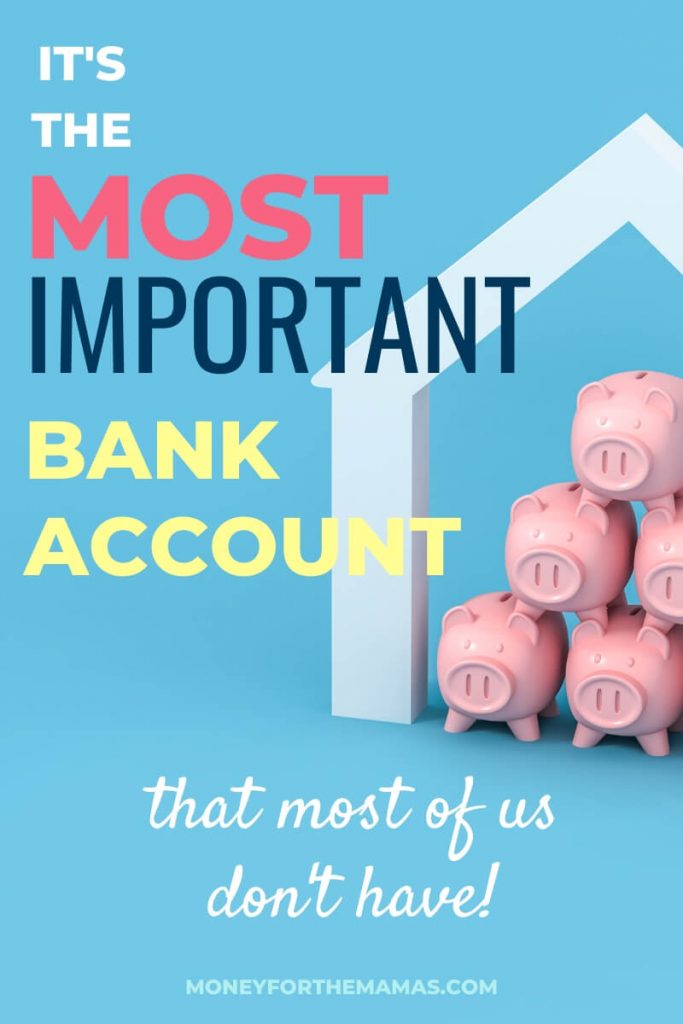
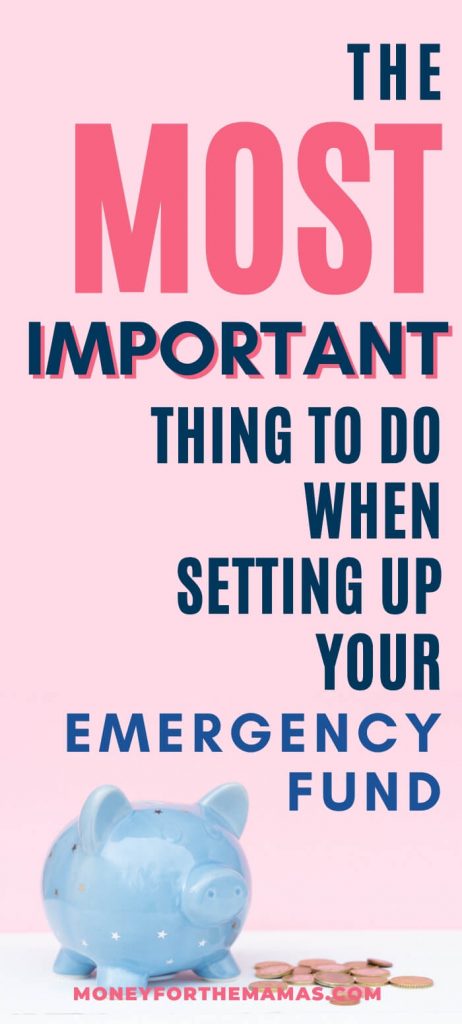
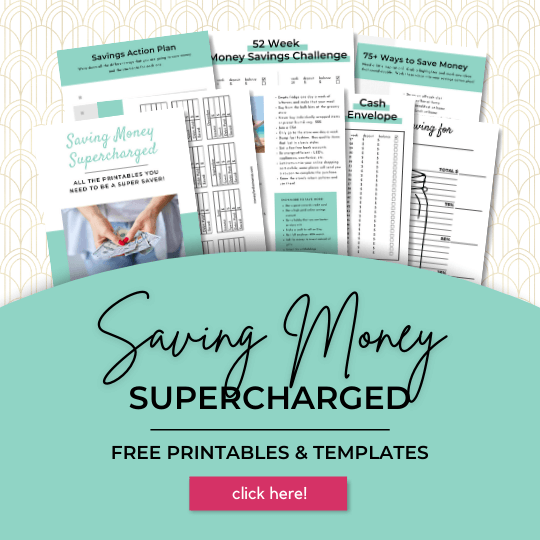
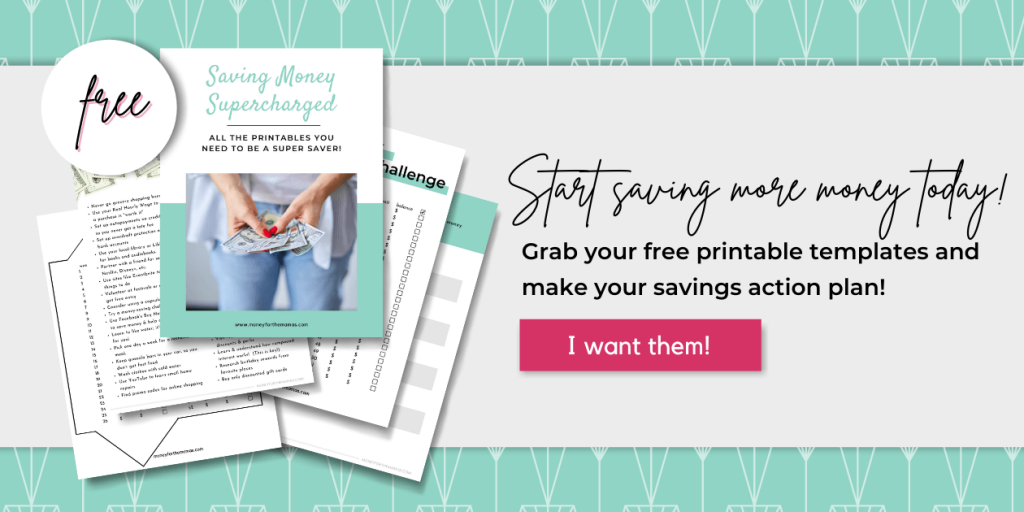
This was crazy informative and really well put together – thanks for the info!
So glad you liked it Erika!
We sleep so much better with an emergency fund. So much pressure has been taken off!
So glad that your emergency fund has given you such peace of mind!
I really like the clarity you provide about situations where a longer term (1 year) emergency fund would be needed! This is the first time I’ve seen this and it makes a lot of sense.
So glad you found that part helpful. Savings are not a one size fits all, and it helps to look at potential “what ifs”.
I have a habit of keeping some money in my emergency funds as that jar is always my savior
It absolutely saves the day!
It’s so important to have an emergency fund! Thanks for explaining how to do it!
You’re very welcome Ashley!
Such great tips! Love that you recommend using a high interest savings account for your emergency fund, this is what we recommend to others as well. And we lean more towards the 9-12 month group.
Yeah, the 3 month suggestions seems way too low to me! 9-12 months is great!
Needful content. Keep creating content like this! Tons of love for you
Thanks so much!
This is especially important in today’s climate. Thank you for sharing!
Yes, things are so uncertain right now, it’s scary and unsettling.
Great advice. Many people don’t think about this stuff until it’s last minute or too late!
Sad to say that’s very true! I hope after things calm down, people will be more motivated to get an emergency fund together.
Such useful tips! Thanks so much for sharing your wisdom!
So glad you found it useful Faith! Thanks for stopping by!
We are working our way towards saving 6 months of expenses but with hubby losing his job during Covid it’s slow going at the moment!
Amy, I’m so sorry, that’s a hard blow for any family. Keep your head up, things will get better and you will absolutely get back your EF!
Having an emergency fund provides such a wonderful sense of security. Years ago when we first set up our emergency fund I felt a weight lifted off of my shoulders. We’ve been able to keep our emergency fund in place over the years and it’s provided us with so much financial freedom.
YES! The feeling of having that “security” can’t be beat!
Emergency funds are becoming even more and more important than they were (they were already super important). You just never know what’s going to happen! Thanks for all the great tips.
Yes, that past few months have been especially hard on those without emergency funds. With things quieting now, it’s time to load it up again for a potential fall surge.
I love the steps to setting up an emergency fund and also ideas for gaining money to put towards it.
So glad you liked it! Thanks for stopping by Alisha!